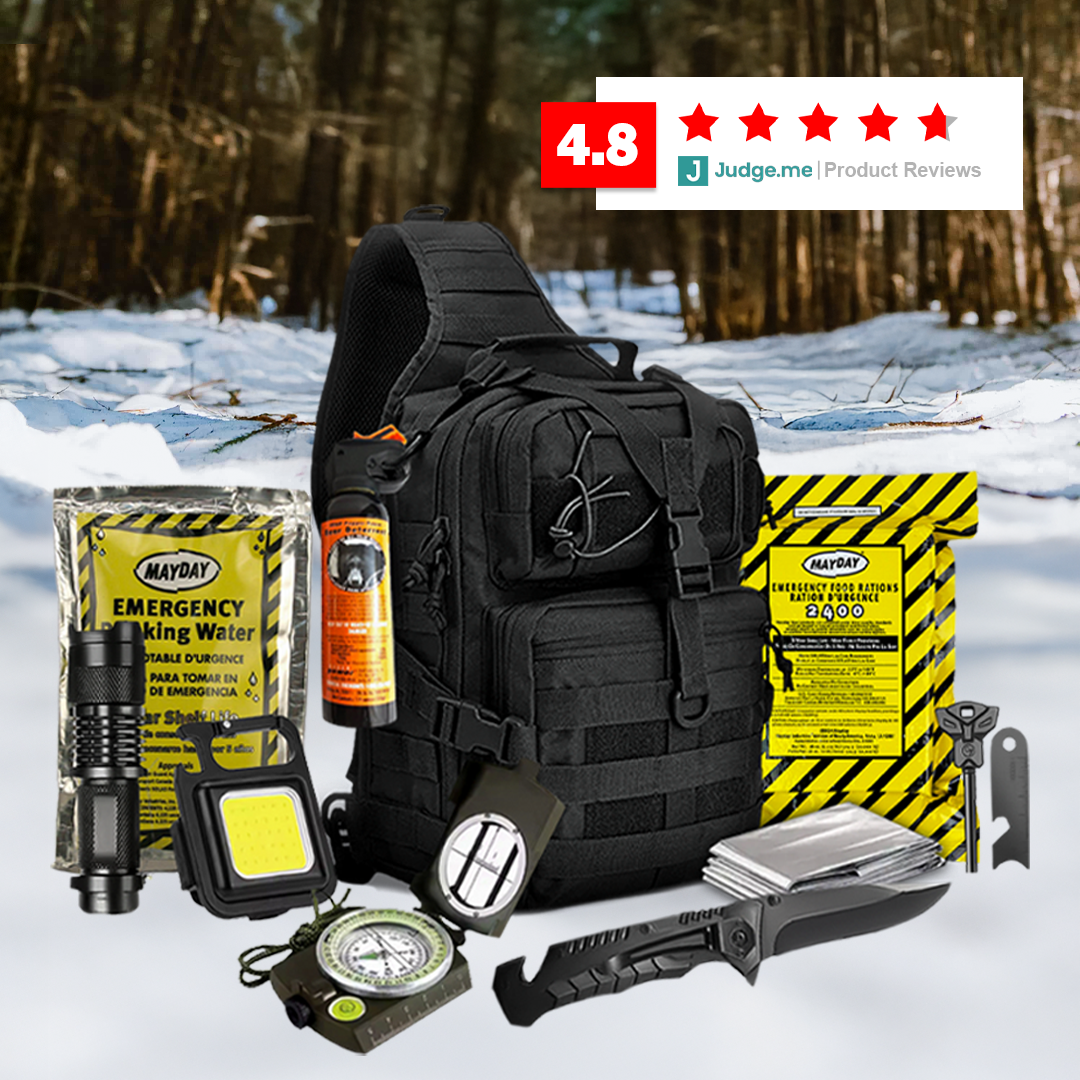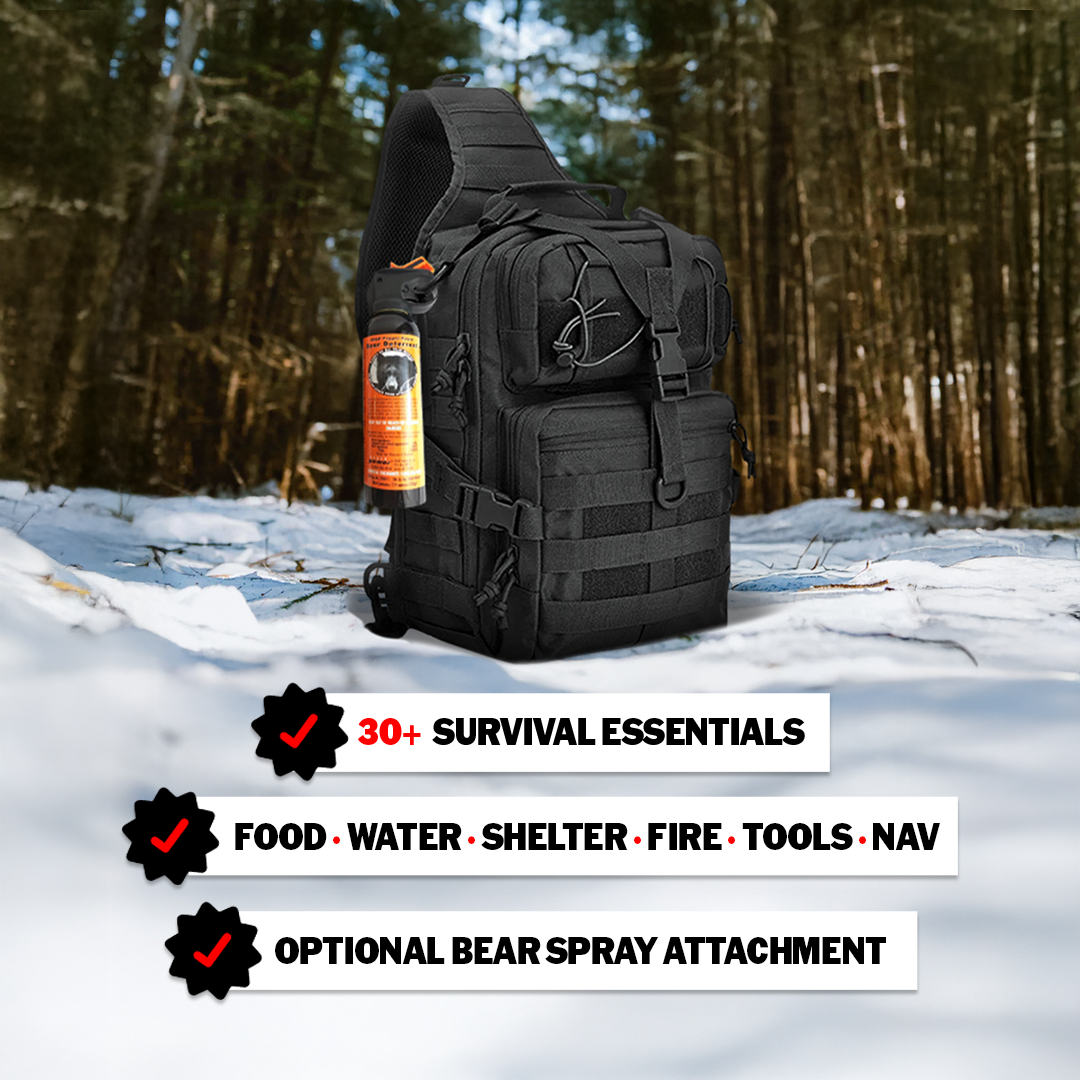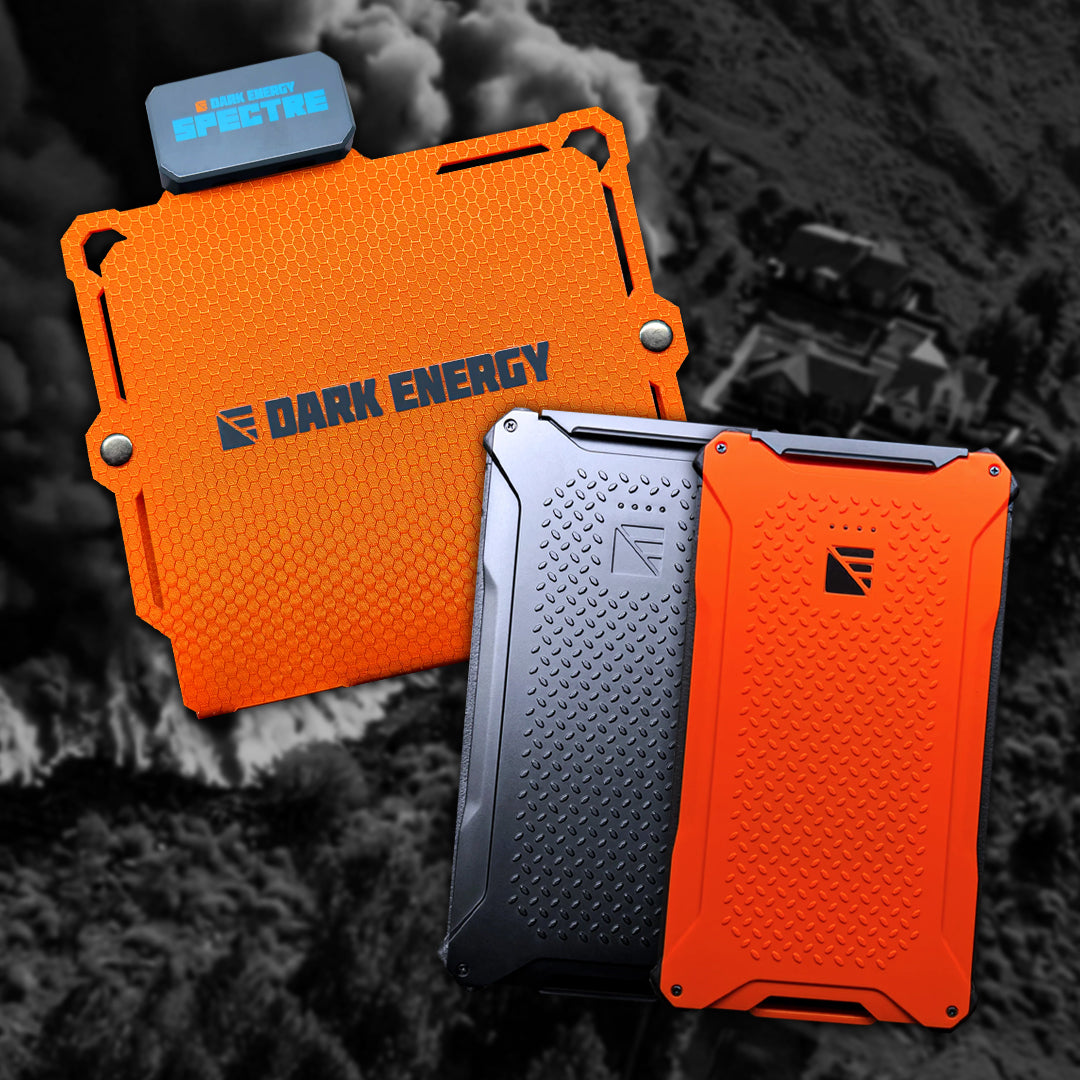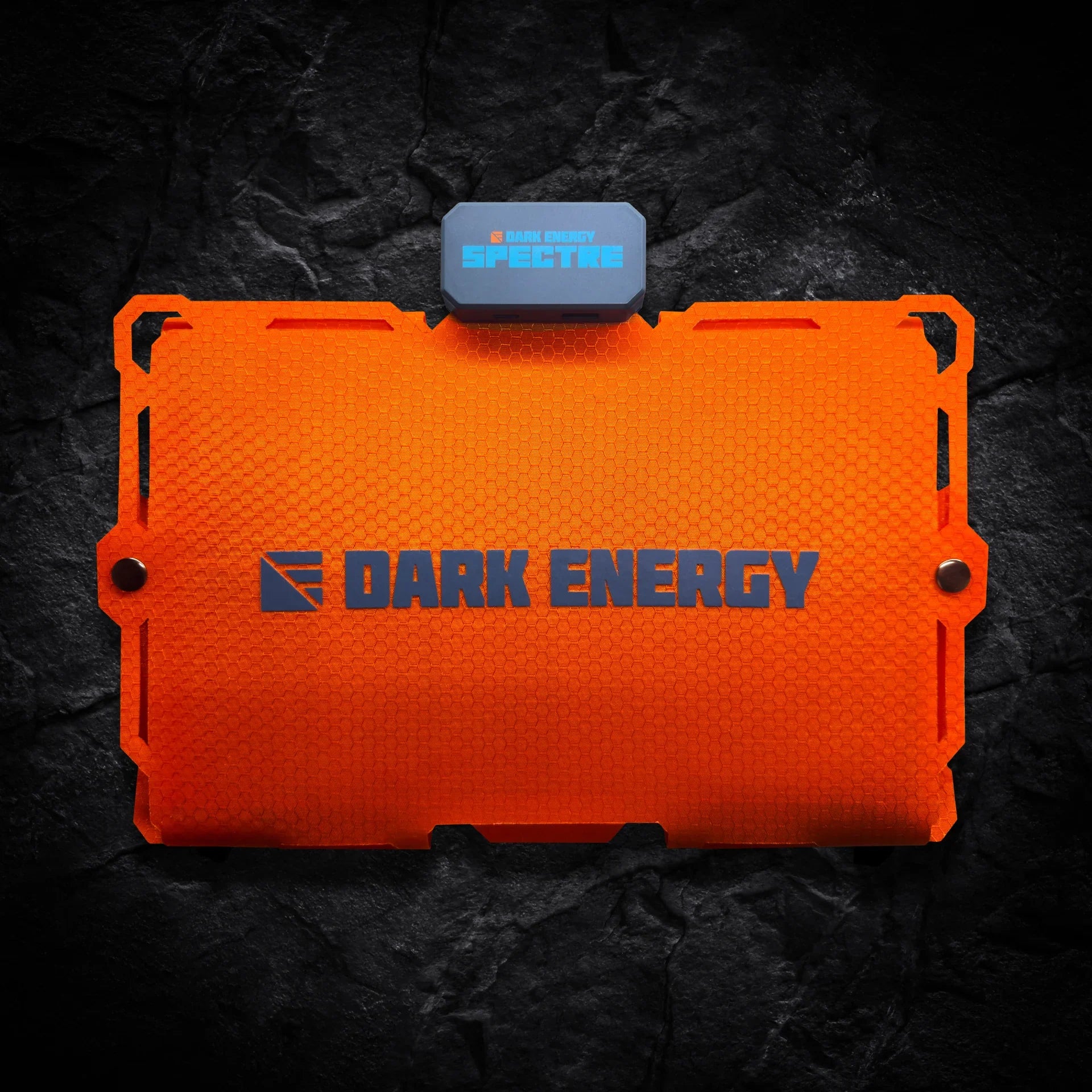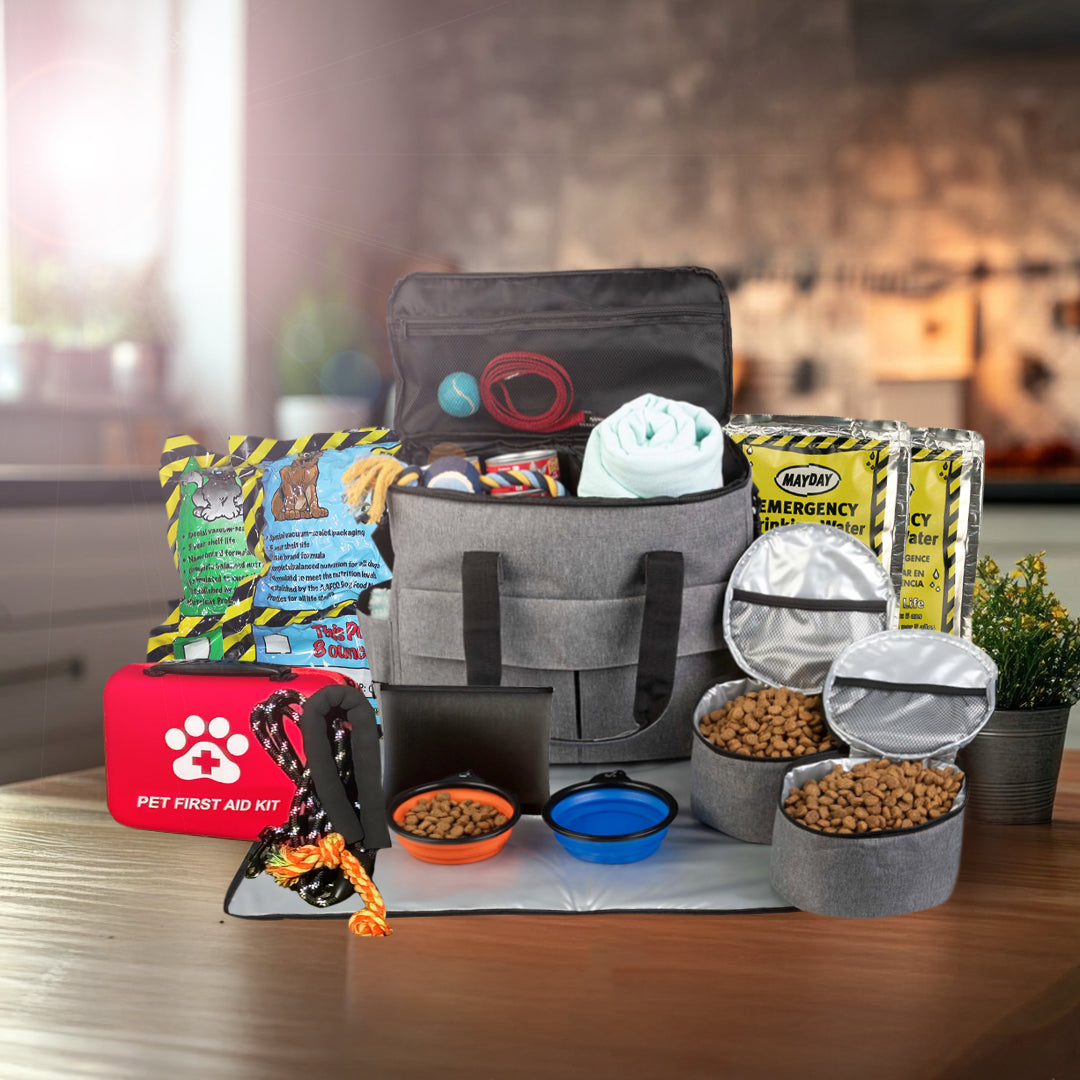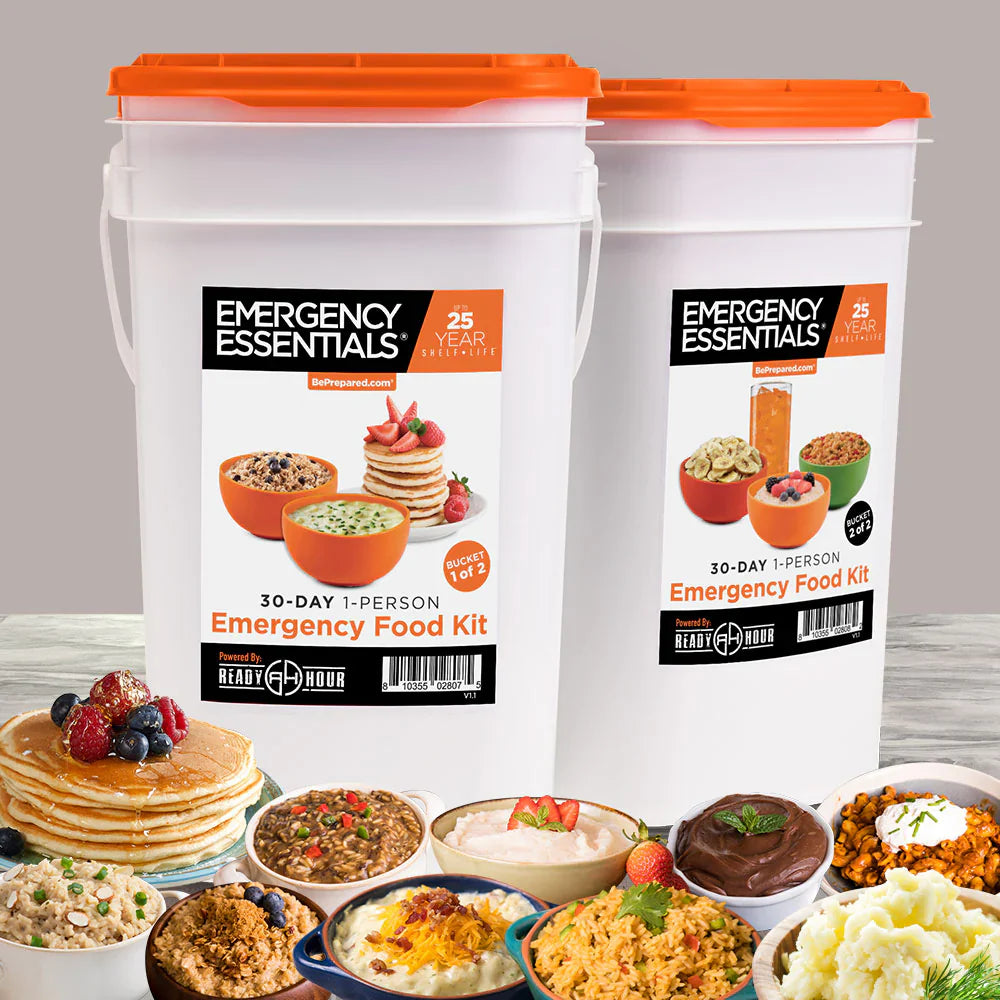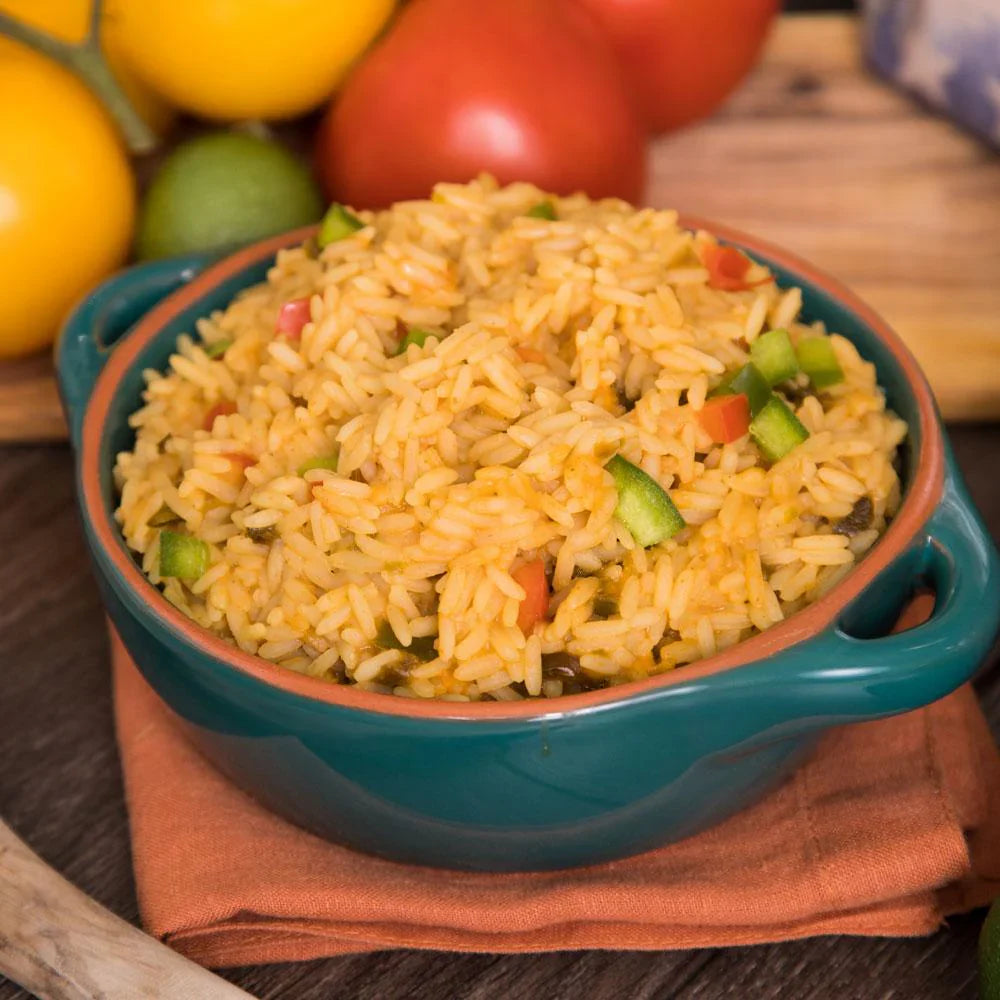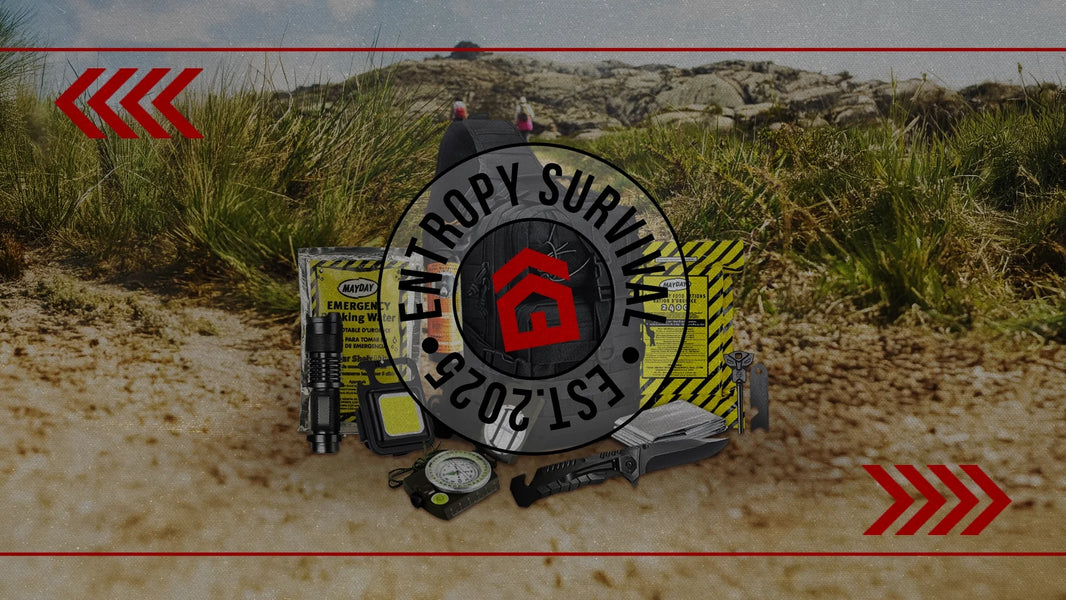Discover why this ancient bread has been sustaining humanity through crises for millennia and how it fits into your modern emergency preparedness plan
When natural disasters strike, power grids fail, or unexpected emergencies unfold, one of humanity's oldest foods becomes one of our most valuable resources. Unleavened bread, a simple combination of flour and water that requires no modern conveniences to create, has sustained explorers, soldiers, and survivors for thousands of years. Today, this humble bread deserves a place in every modern emergency preparedness plan.
At Entropy Survival, where our Army veteran leadership has decades of experience in both military operations and emergency preparedness, we understand the critical importance of reliable, shelf-stable foods that can be prepared under any conditions. Our approach to disaster preparedness emphasizes practical, time-tested solutions, and unleavened bread represents exactly this kind of foundational preparedness knowledge.
What Makes Unleavened Bread the Perfect Survival Food
Unlike the fluffy, risen breads we're accustomed to in modern kitchens, unleavened bread contains no yeast, baking powder, or other rising agents. This seemingly simple difference creates a food that's ideally suited for emergency situations. The absence of leavening agents means unleavened bread can be made quickly, requires minimal ingredients, and stores for extended periods without refrigeration.
The genius of unleavened bread lies in its simplicity. When you're facing a power outage, limited cooking facilities, or need to evacuate quickly, you don't want complicated recipes requiring precise measurements, specific temperatures, or specialized equipment. Unleavened bread can be mixed in any container, cooked on any heat source, and prepared by anyone regardless of their baking experience.
From a nutritional standpoint, unleavened bread provides the carbohydrates your body needs for energy during stressful situations. When you're dealing with emergency repairs, evacuation procedures, or simply the mental strain of uncertain circumstances, your body burns through calories more quickly than usual. The quick energy provided by carbohydrates becomes essential, making bread a practical survival food that goes beyond mere sustenance.
The Historical Foundation of Survival Bread
Understanding the history of unleavened bread reveals why it's been humanity's go-to survival food for millennia. Archaeological evidence suggests that the earliest forms of bread, dating back over 14,000 years, were unleavened flatbreads cooked on hot stones. These ancient peoples understood something modern preppers are rediscovering: simplicity equals reliability in survival situations.
Throughout recorded history, unleavened bread has sustained people through humanity's greatest challenges. Ancient armies carried flatbreads on long campaigns because they lasted longer than leavened bread and could be prepared quickly in field conditions. Christopher Columbus packed unleavened bread for his transatlantic voyages, knowing it would provide reliable nutrition when fresh food ran out. During the American Civil War, soldiers on both sides relied on hardtack, a type of unleavened bread so durable it could survive months of transport and storage.
The Jewish tradition of matzah, eaten during Passover, commemorates the historical urgency of the Exodus from Egypt, when there wasn't time to let bread rise before fleeing. This religious observance actually preserves ancient survival wisdom about the practicality of unleavened bread during times of crisis and rapid movement.
Native American peoples across North America developed numerous variations of unleavened bread, from the corn-based flatbreads of the Southwest to the wild rice cakes of the Great Lakes region. These traditional foods were designed to provide nutrition during long hunting expeditions, seasonal migrations, and periods when other food sources were scarce.
Essential Unleavened Bread Recipes for Emergency Preparedness
The beauty of unleavened bread lies in its versatility. Depending on your available ingredients and cooking methods, you can create nutritious, filling bread that will sustain your family through difficult times. Here are the fundamental recipes every preparedness-minded individual should master.
Basic Survival Flatbread requires only flour, water, and salt. Mix two cups of flour with half a teaspoon of salt, then gradually add water until you form a workable dough. The amount of water will vary depending on humidity and flour type, but you're aiming for a consistency that's not sticky but not crumbly. Knead the dough briefly on any clean surface, then divide into portions roughly the size of tennis balls. Roll or press each portion into flat discs about the thickness of a tortilla. Cook these on any hot surface, from a cast iron pan to a clean rock heated over coals, until they're lightly browned on both sides.
This basic recipe can be prepared over a campfire, on a camping stove, or even using the emergency cooking methods recommended in comprehensive survival plans. The ingredients store well in sealed containers and can be measured by volume rather than weight, making preparation possible even when you don't have access to a kitchen scale.
Enhanced Nutrition Hardtack takes the basic concept and adds longevity and nutritional value. Combine two cups of flour with one tablespoon of soy flour, one teaspoon of wheat germ, and one teaspoon of powdered milk per cup of regular flour. Add salt to taste and just enough water to form a stiff dough. Roll this mixture to about half an inch thick, cut into squares, and poke holes throughout each piece with a nail or skewer. Bake these pieces until they're completely hard and dry.
The resulting hardtack can last for months when stored properly in airtight containers. While it's notably tough and bland, it provides complete proteins and essential nutrients that make it valuable for extended emergency situations. Hardtack can be eaten as-is, softened in water or soup, or ground into flour for other recipes.
Quick Energy Camping Bread adds fats and sugars for immediate energy needs. Mix two cups of flour with one tablespoon of sugar, half a teaspoon of salt, and two tablespoons of oil or melted butter. Add enough water to form a soft dough, then cook as flatbread. This version provides more calories per serving and tastes significantly better than basic survival bread, making it ideal for situations where morale and energy levels are important considerations.
Mastering Emergency Cooking Methods
One of the greatest advantages of unleavened bread is its adaptability to various cooking methods. When standard kitchen appliances aren't available, these alternative cooking techniques ensure you can still prepare nutritious bread for your family.
Cast Iron Cooking represents the most versatile emergency cooking method. A seasoned cast iron pan can be used over wood fires, propane burners, or even charcoal grills. The heavy metal distributes heat evenly, preventing burning while ensuring thorough cooking. Cast iron's heat retention means you can remove it from the fire and continue cooking on residual heat, conserving fuel.
Hot Stone Cooking requires no equipment beyond clean, flat stones and a fire. Heat stones in the fire for at least thirty minutes, then carefully remove them using sticks or tools. Test the temperature by sprinkling water on the stone; it should sizzle immediately but not create violent steam. Place your flattened dough directly on the hot stone, cooking until the bottom firms up, then flip carefully.
Reflector Oven Techniques work well with hardtack-style breads that need longer, more even cooking. Position a reflective surface, such as aluminum foil or a polished metal panel, to direct heat from your fire toward a horizontal cooking surface. This method provides more controlled heat than direct flame cooking and works particularly well for thicker breads that need to cook through completely.
These cooking methods align with the broader emergency preparedness philosophy that emphasizes adaptability and self-sufficiency. When you understand multiple ways to accomplish the same goal, you're better prepared for whatever circumstances arise.
Storage and Preservation Techniques
Proper storage transforms unleavened bread from a short-term emergency food into a long-term survival resource. The key lies in understanding how to control moisture, prevent pest infiltration, and maintain nutritional value over extended periods.
Immediate Storage focuses on breads you'll consume within days or weeks. Freshly made unleavened bread should be completely cooled before storage to prevent condensation. Wrap individual pieces in clean cloth or paper, then place them in airtight containers. Properly stored soft flatbreads will remain edible for five to seven days, while harder breads like hardtack can last several weeks.
Long-Term Storage requires more sophisticated techniques for breads intended to last months or years. Hardtack and similar dry breads must be dehydrated completely before storage. Use food-grade containers with tight-fitting lids, and consider adding oxygen absorber packets to prevent spoilage. Store containers in cool, dark locations where temperatures remain relatively stable.
Vacuum Sealing extends storage life significantly for emergency food supplies. Vacuum-sealed unleavened breads can last for months when stored properly, making them excellent additions to bug-out bags or long-term emergency food stores. However, very hard breads may puncture vacuum bags, so consider wrapping them in cloth before sealing.
The storage considerations for unleavened bread integrate well with comprehensive emergency food planning. When building your emergency food supplies, unleavened bread ingredients and finished products should be part of a diverse food storage system that includes proteins, vegetables, and other nutritional components.
Nutritional Considerations for Emergency Situations
During emergencies, your body's nutritional needs change significantly. Stress, physical exertion, and limited food variety all impact how your body processes nutrients. Understanding how unleavened bread fits into emergency nutrition helps you make better preparedness decisions.
Carbohydrate Energy forms the foundation of emergency nutrition. Your brain and muscles need readily available glucose to function effectively during stressful situations. Unleavened bread provides complex carbohydrates that release energy steadily, avoiding the blood sugar spikes and crashes associated with simple sugars. This steady energy release is particularly important when you're making critical decisions under pressure.
Protein Enhancement becomes crucial for longer emergency situations. While basic flour provides some protein, adding ingredients like soy flour, wheat germ, or even protein powder to your unleavened bread significantly improves its nutritional profile. Complete proteins help maintain muscle mass and support immune function when your body is under stress.
Micronutrient Fortification addresses the reality that emergency situations often limit dietary variety. Adding powdered milk provides calcium and additional protein. Wheat germ contributes B vitamins and healthy fats. These simple additions transform basic survival bread into a more complete nutritional resource.
Caloric Density matters when you're carrying emergency supplies or feeding a family from limited resources. Unleavened breads made with added fats provide more calories per ounce than basic flour-and-water recipes. This increased caloric density becomes important when weight and volume constraints limit how much food you can store or transport.
Building Unleavened Bread into Your Preparedness Plan
Integrating unleavened bread knowledge into your overall emergency preparedness requires thinking beyond individual recipes to consider how this skill supports your family's broader survival strategy. The goal isn't just knowing how to make bread; it's understanding how bread-making capability enhances your overall resilience.
Skills Development should begin now, while you have access to unlimited practice opportunities. Make unleavened bread regularly using different methods and ingredients. Practice cooking over wood fires, using cast iron, and working with minimal equipment. The time to learn these skills is not during an actual emergency when stress levels are high and mistakes are costly.
Ingredient Stockpiling requires balancing storage space, shelf life, and versatility. Store multiple types of flour, including wheat, rice, and corn flours for variety and nutritional diversity. Keep salt, baking soda, and basic seasonings in sealed containers. Consider storing powdered milk, wheat germ, and other nutritional enhancers that improve the value of basic bread recipes.
Equipment Preparation means having the tools necessary for bread-making under emergency conditions. Cast iron pans, mixing bowls, and basic utensils should be part of your emergency cooking equipment. Consider manual alternatives to electric equipment, such as hand-crank grain mills if you store whole grains.
This preparation philosophy aligns with the comprehensive approach recommended by survival experts who emphasize building practical skills alongside equipment stockpiles. The most sophisticated emergency supplies become useless if you don't know how to use them effectively under pressure.
Advanced Techniques for Experienced Preppers
Once you've mastered basic unleavened bread techniques, advanced methods can improve nutrition, flavor, and storage life while building more sophisticated emergency cooking capabilities.
Sprouted Grain Breads increase nutritional value by using sprouted wheat berries or other grains. Sprouting breaks down starches into more digestible sugars and increases vitamin content. Grind sprouted grains into flour, then use in standard unleavened bread recipes. The resulting bread provides better nutrition and often tastes slightly sweeter than bread made from regular flour.
Wild Plant Integration extends your bread-making capabilities when conventional ingredients run low. Many wild plants, including acorns, cattail roots, and various seeds, can be processed into flour substitutes. However, this requires extensive knowledge of plant identification and processing techniques. Never attempt to use unfamiliar plants without expert guidance.
Fermentation Techniques create naturally leavened breads without commercial yeast. Sourdough starters can be maintained indefinitely and provide the leavening action that creates lighter, more digestible bread. While technically not unleavened, naturally fermented breads bridge the gap between basic survival bread and more sophisticated baking.
Smoking and Dehydrating preserves unleavened breads for extended storage. Cold smoking adds flavor while providing some preservation benefits. Complete dehydration creates extremely long-lasting emergency rations, though the resulting product requires rehydration before consumption.
These advanced techniques require significant practice and knowledge development, but they represent the kind of self-sufficient skills that provide real security during extended emergency situations.
Integrating Bread Skills with Modern Emergency Preparedness
While unleavened bread represents ancient survival wisdom, it integrates seamlessly with modern emergency preparedness approaches. The key lies in understanding how traditional skills complement contemporary emergency planning and equipment.
Bug-Out Bag Integration means including bread-making ingredients and equipment in portable emergency supplies. A sealed bag containing flour, salt, and basic seasonings weighs little but provides the foundation for multiple meals. Small cast iron pans designed for camping add minimal weight while providing reliable cooking capability.
Community Preparedness recognizes that emergency situations often require cooperation with neighbors and community members. Bread-making skills become valuable community resources when shared knowledge helps everyone eat better during difficult times. Teaching others these skills builds social resilience alongside individual preparedness.
Psychological Benefits shouldn't be underestimated when considering emergency food planning. The ability to create familiar, comforting foods during stressful times provides emotional stability alongside physical nutrition. Fresh bread, even simple unleavened flatbread, offers normalcy and comfort when everything else feels uncertain.
Integration with Modern Equipment means using contemporary tools to enhance traditional techniques. Solar ovens can bake unleavened breads using no fuel. Portable propane burners provide controlled heat for consistent results. Modern food storage containers and vacuum sealers extend the storage life of both ingredients and finished products.
This integration approach reflects the philosophy that effective emergency preparedness combines the best of traditional knowledge with modern technology and materials.
The Role of Food Security in Comprehensive Preparedness
Understanding unleavened bread as part of broader food security reveals its true value in emergency preparedness planning. Food security means having reliable access to sufficient, safe, and nutritious food regardless of external circumstances. Unleavened bread contributes to food security by providing a reliable foundation that can be prepared under almost any conditions.
Self-Sufficiency Development progresses from depending entirely on stored foods to developing the skills and resources necessary to produce food independently. Bread-making skills represent an important step in this progression because they transform basic stored ingredients into satisfying, nutritious meals.
Resource Efficiency becomes critical when emergency supplies must last for extended periods. Unleavened bread maximizes the nutritional value extracted from basic flour stores while requiring minimal additional resources for preparation. This efficiency helps extend the practical duration of your emergency food supplies.
Adaptability Under Pressure distinguishes theoretical knowledge from practical survival skills. Unleavened bread techniques work equally well whether you're dealing with a temporary power outage or a longer-term disruption to normal food distribution systems. This adaptability provides genuine security rather than mere preparedness theater.
The comprehensive preparedness approach embraces food security as a fundamental component of overall resilience, recognizing that the ability to maintain adequate nutrition directly impacts every other aspect of emergency response and recovery.
Building Long-Term Resilience Through Traditional Skills
Learning to make unleavened bread represents more than acquiring a single survival skill; it demonstrates the value of traditional knowledge in building genuine resilience. Throughout human history, the skills that sustained our ancestors through difficult times remain relevant for modern challenges.
Historical Wisdom Applied means recognizing that our ancestors' survival techniques worked because they were tested under real-world conditions over generations. Unleavened bread has sustained humans through famines, wars, explorations, and natural disasters because it represents practical solutions to fundamental survival needs.
Skill Stacking Benefits emerge when individual capabilities combine to create greater overall preparedness. Bread-making skills complement food preservation knowledge, wild plant identification, fire building, and other traditional skills. Each individual skill becomes more valuable when integrated with related capabilities.
Cultural Continuity connects modern preparedness with historical survival traditions. Learning these skills helps maintain valuable knowledge that might otherwise be lost while building personal confidence in your ability to provide for yourself and your family under challenging conditions.
Teaching and Community Building spreads these valuable skills while strengthening community resilience. When more people understand traditional food preparation techniques, entire communities become more resilient and less dependent on external supply chains during emergencies.
This broader perspective positions unleavened bread knowledge as part of a lifestyle that values self-sufficiency, traditional wisdom, and practical skills over complete dependence on modern convenience systems.
Conclusion: Ancient Wisdom for Modern Preparedness
Unleavened bread embodies everything that makes traditional survival skills valuable for modern emergency preparedness. Its simplicity ensures reliability when complex systems fail. Its minimal ingredient requirements make it accessible regardless of supply chain disruptions. Its versatility adapts to whatever cooking methods and equipment remain available during emergencies.
More importantly, mastering unleavened bread techniques builds the kind of practical confidence that defines genuine preparedness. When you know you can create nutritious, satisfying food from basic ingredients using simple tools, you've achieved a level of self-sufficiency that no amount of stored supplies can provide by themselves.
At Entropy Survival, we believe that true preparedness combines the best traditional knowledge with modern planning and equipment. Our comprehensive approach to emergency preparedness recognizes that skills like bread-making provide the foundation upon which all other preparations build. Whether you're building your first emergency food supply or expanding an established preparedness plan, unleavened bread deserves consideration as both a practical food source and a valuable survival skill.
The path to genuine preparedness begins with mastering the fundamentals that have sustained humanity through our greatest challenges. Unleavened bread represents one of these fundamentals, connecting ancient survival wisdom with modern emergency planning. Start practicing these techniques today, while you have the luxury of unlimited attempts and comfortable learning conditions. Tomorrow, when circumstances are less forgiving, you'll be grateful for the skills you've developed and the confidence they provide.
Make sure to check out more articles in our News & Views section. Feel free to reach out any time to see how Entropy Survival can help you prepare you and your family for any disaster or survival scenario.
Ready to build comprehensive emergency preparedness that combines traditional skills with modern equipment? Explore how Entropy Survival's expert-curated emergency kits complement the self-sufficiency skills that provide real security when conventional systems fail.




